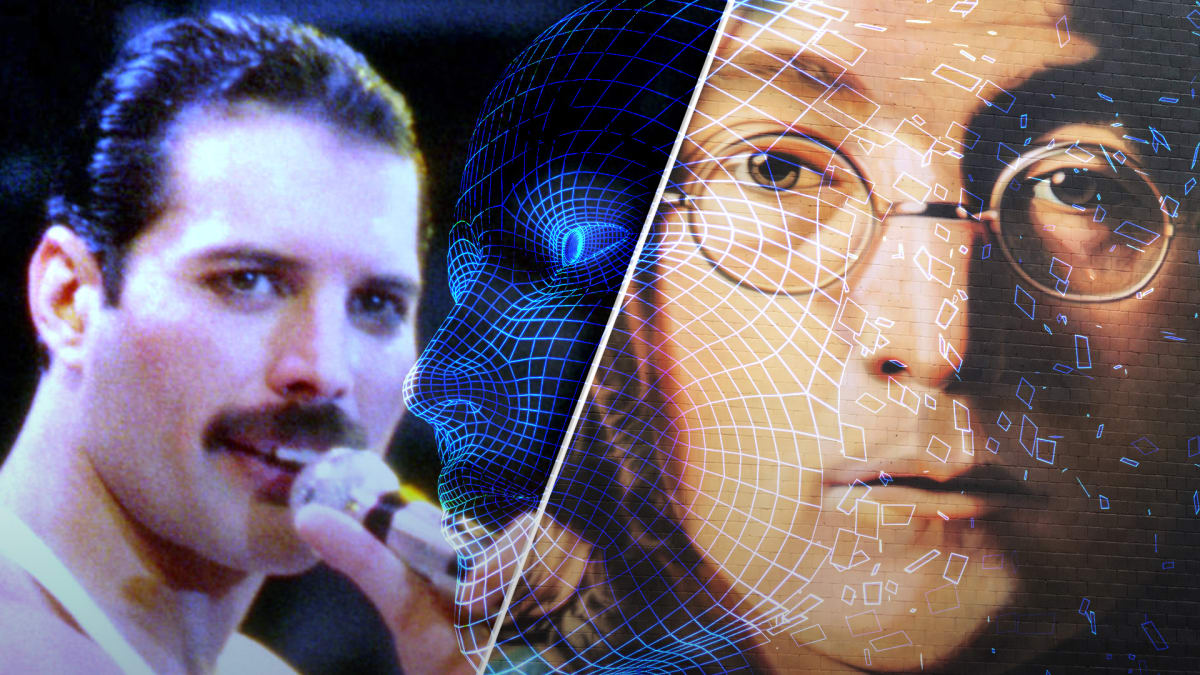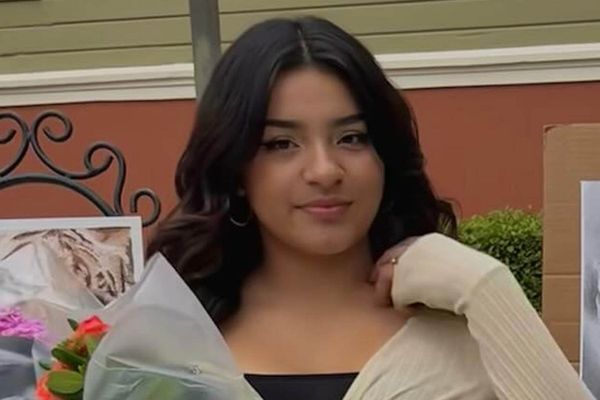
The last time I wrote about artificial intelligence in music, I was very much against the idea of it.
In the time since, I have become immersed in the world of AI, and now am convinced that applying the tech to the arts is just not what it was meant to do. This technology, if handled properly, has the potential to cure cancer or redesign the country's electrical grid to enable a shift to green energy.
DON'T MISS: Musicians Find AI Terrifying, But Spotify's CEO (Sort of) Disagrees
But when it comes to the creation of art, AI provides little but a crutch to human creativity.
In the right hands, though, and handled in the right way, it has a strange potential to be beautiful.
That potential revolves around the somewhat creepy notion of not-quite-literal resurrection; AI models provide a pathway to bring long-lost musicians back to life.
Last year, a video of Brian May, performing "Love of My Life" alongside the late Freddie Mercury, went viral. Freddie, in optical-illusion hologram form made from archived footage of Queen's 1986 Wembley concert, feels alive in the brief moment.
But far from feeling disturbing or disrespectful, the moment serves as an emotional tribute to a gifted artist who we all lost far too soon.
And though this hologram of Mercury is not quite the same as AI, the principle holds; with the right context, technology can help create startlingly beautiful moments.
The Beatles are now doing a similar thing, working with AI to bring John Lennon back for one last song.
"When we came to make what will be the last Beatles record, it was a demo John had that we worked on. We were able to take John's voice and get it pure through this AI so then we could mix the record as you could normally do," Paul McCartney told the BBC. "It gives you some sort of leeway. So there's a good side to it and a scary side, so we'll just have to see where that leads."
McCartney explained that a similar kind of technology was used in Peter Jackson's "Get Back" documentary.
Jackson "was able to extricate John's voice from a ropey little bit of cassette. He could separate them with AI," McCartney said. "They tell the machine, 'That's a voice, this is a guitar, lose the guitar.' And he did that. So it has great uses."
This is not the first time a group has used AI to bring a musician back to life.
In 2021, a non-profit mental health organization called Over The Bridge used "AI to create the album that was lost to music's mental health crisis." The result was "The Lost Tapes of the 27 Club."
The organization used a combination of two AI systems -- a music AI and a lyric AI -- and cover singers to generate new songs by Jimi Hendrix, Nirvana, Amy Winehouse and The Doors.
These models were trained on each artist's previous work.
The work was done to highlight music's mental health crisis. The goal was to honor the late artists, while not romanticizing the idea of the 27 Club.
"To draw attention to this issue, we used AI to imagine what these artists might have created, were they still with us," Over The Bridge said in a statement. "And we were positively overwhelmed, and humbled, by the conversation it sparked."
The difficult thing is that no artist being resurrected by AI could have given their permission for it.
In the right context, with the right intention, this technology can be powerfully emotive. But as more and more music-generation AIs come out, the trend of stealing and manipulating an artist's work and voice is just becoming more popular.
And that is a violation of the art.







